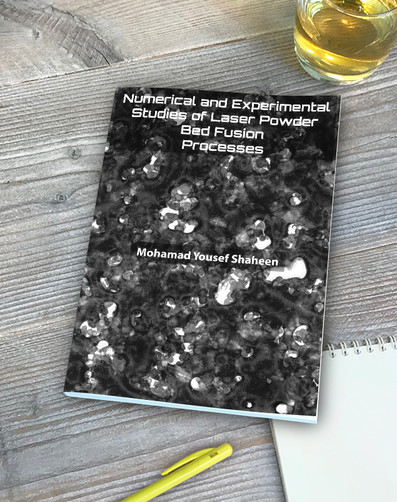
Additive Manufacturing (AM), or 3D printing, revolutionizes product design and manufacturing by building parts layer by layer using materials like plastics, metals, and ceramics. Unlike traditional subtractive methods, AM allows for the creation of complex geometries economically. This technology has grown rapidly, impacting industries such as aerospace, automotive, healthcare, and consumer goods.
This thesis focuses on the laser powder bed fusion (LPBF) method, which uses a high-energy laser to fuse powdered material layers into three-dimensional objects. LPBF faces challenges like high porosity, anisotropic properties, and execution divergence from design. To address these, optimizing process parameters is crucial, traditionally requiring costly experiments. The thesis explores numerical methods for optimizing LPBF, supported by experiments to validate these models, focusing on powder spreading and melting processes.
In the first part of this study, we investigate the powder spreading process numerically and experimentally. For different powders and spreading parameters.
In the second part, we introduce the developed thermal discrete particle and contact model, which accurately captures fundamental phenomena such as melting, coalescence and consolidation within laser powder bed fusion (LPBF).
Download Thesis